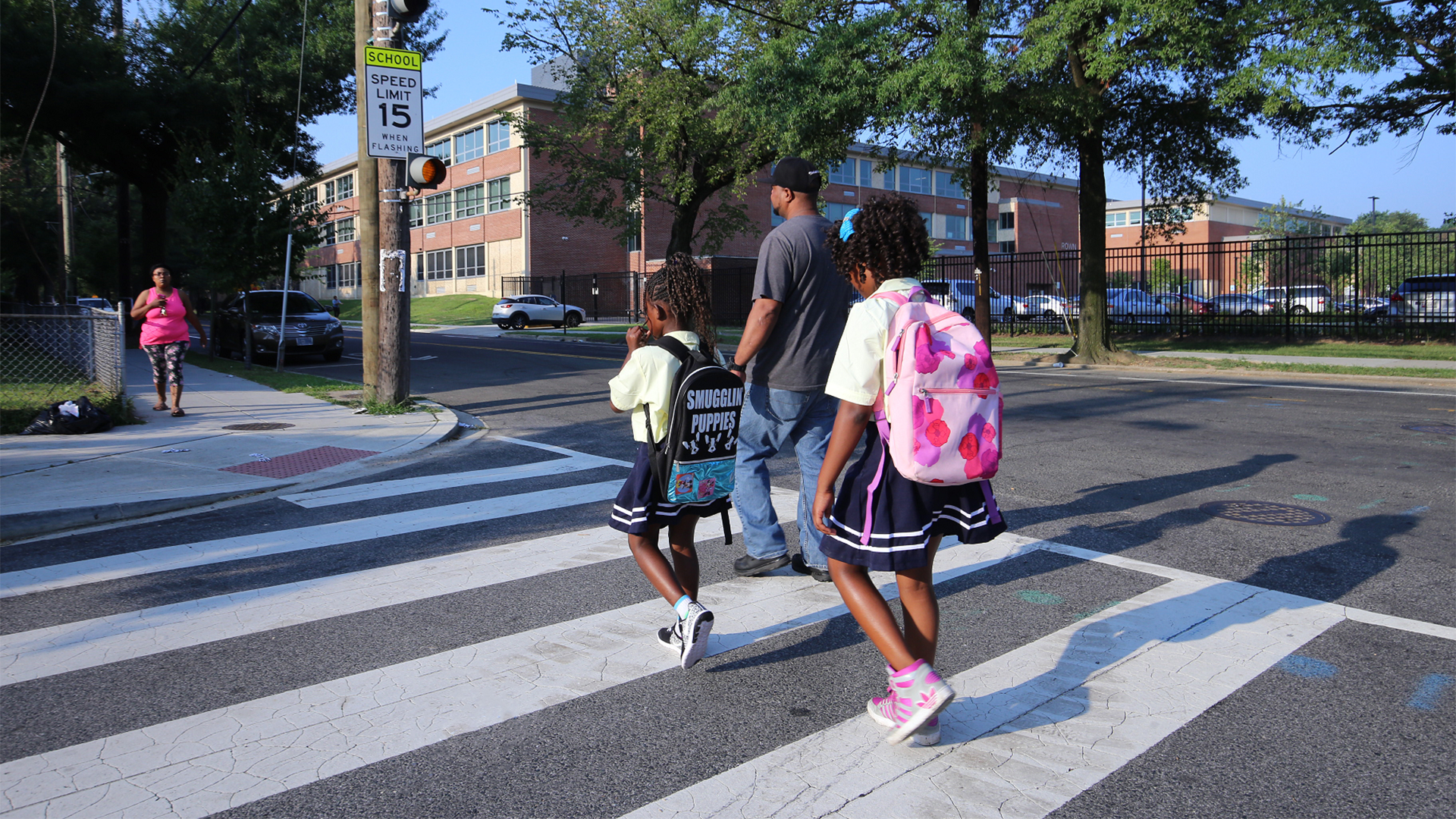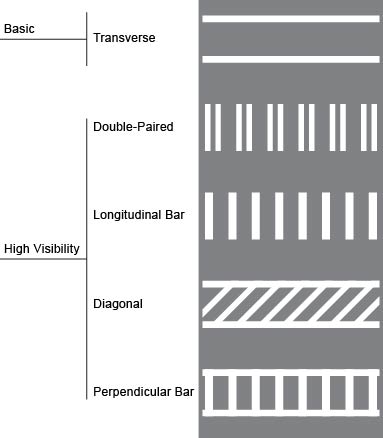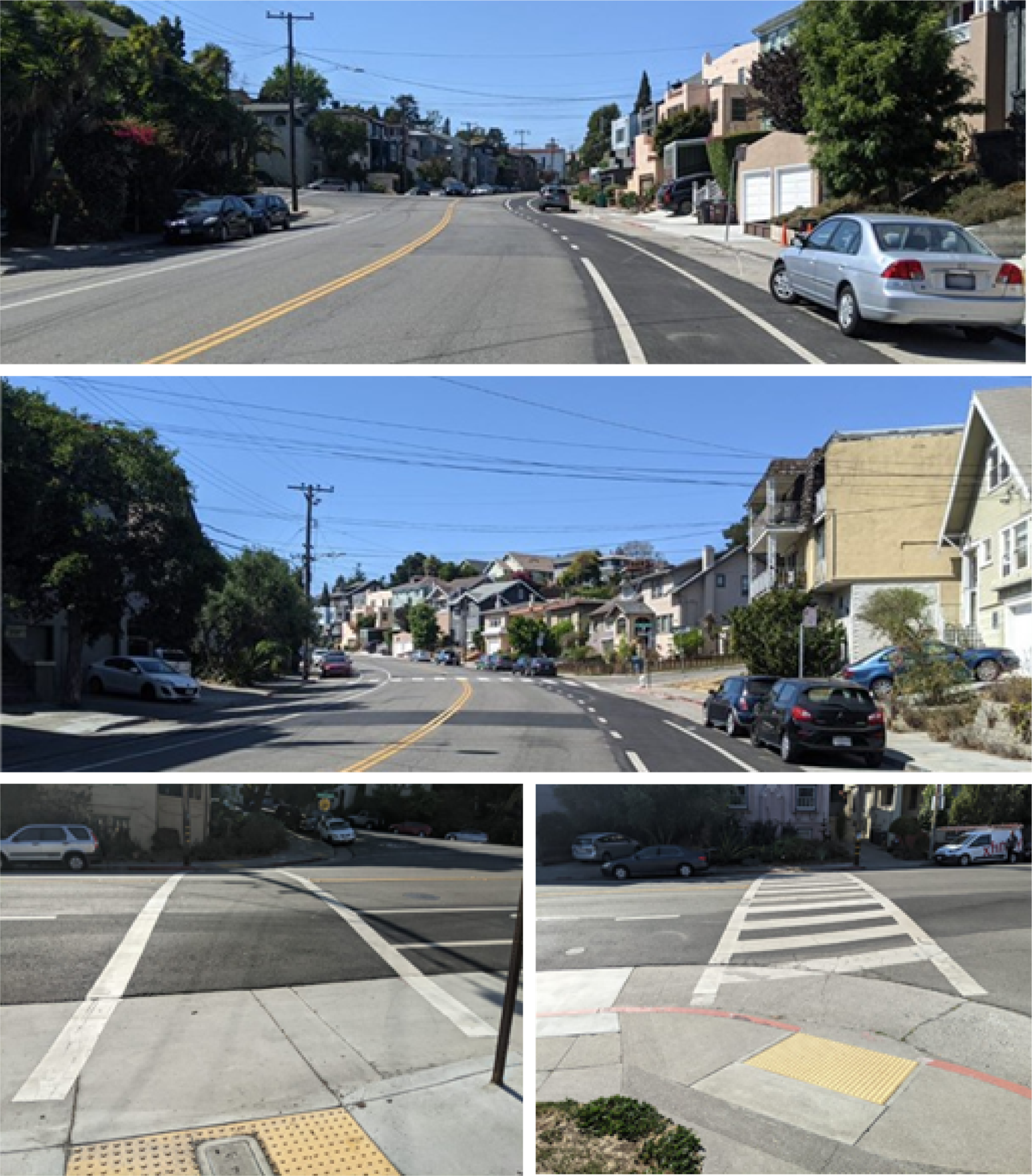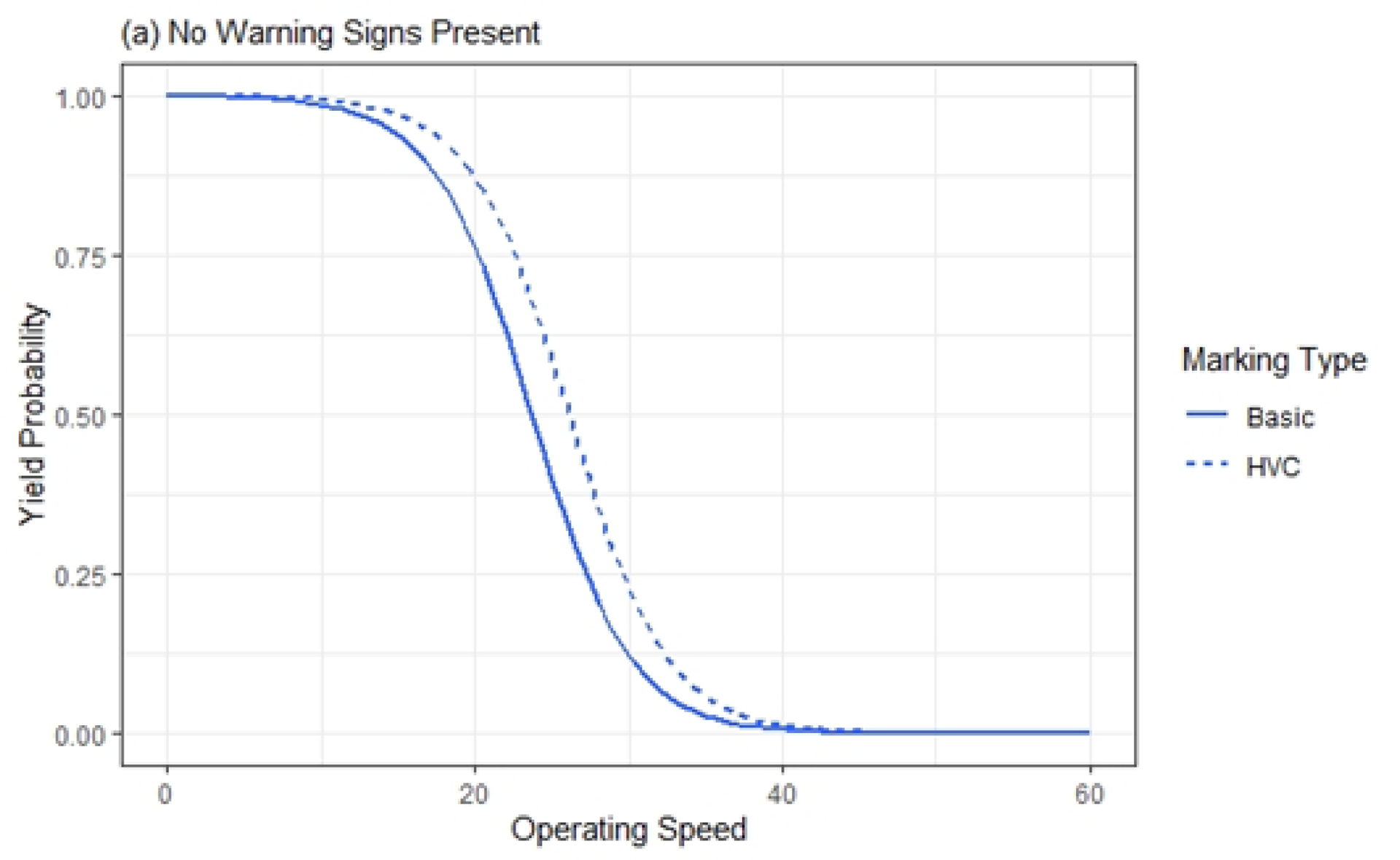November 16, 2022
The ideal crosswalk is the one you don’t remember using. By succinctly conveying relevant instructions to people crossing and people using the roadway, a crosswalk is intended to demonstrate the crossing location for all users, so that people driving easily know where to stop and people walking can easily cross.
In actuality, however, crosswalk placement, design, and treatment selection are far from effortless-in fact, they’re the subject of intense scrutiny and meticulous design. These design choices can mean the difference between life and death: in 2020 alone, 6,516 pedestrians were killed, with 15% of these deaths occurring at intersections.
That’s why we’ve been hard at work on a new FHWA guide, the Crosswalk Marking Selection Guide, that draws attention to the effects of crosswalk design. The findings in this guide are informed by field research that includes 1,200 unique crossing attempts demonstrating that crosswalk markings matter for safety. Read on to learn how we conducted this analysis and what our research revealed.

It matters that crosswalks work!
The Question Isn’t Whether to Mark-It’s How
To understand the purpose of the FHWA guide, it’s helpful to first understand what this guide isn’t. This FHWA guide doesn’t cover whether and where to mark a crosswalk. (Practitioners with this question might turn to the MUTCD, or to the FHWA’s Guide for Improving Pedestrian Safety at Uncontrolled Crossing Locations.) Instead, this guide advises on elements like marking designs and use of materials to be considered after the decision has already been made to mark a crosswalk.
 Though many users identify crosswalks by their markings, markings aren’t what essentially define a legal crosswalk. In many US state vehicle codes, any intersection that connects sidewalks on opposite sides of the road qualifies as a crosswalk that grants the pedestrian right-of-way. Marked crosswalks, meanwhile, reinforce the right-of-way, though the markings themselves can come in many different forms and flavors. All markings, however, can be sorted into two broad categories: “basic” crosswalks and “high-visibility” crosswalks (HVCs).
Though many users identify crosswalks by their markings, markings aren’t what essentially define a legal crosswalk. In many US state vehicle codes, any intersection that connects sidewalks on opposite sides of the road qualifies as a crosswalk that grants the pedestrian right-of-way. Marked crosswalks, meanwhile, reinforce the right-of-way, though the markings themselves can come in many different forms and flavors. All markings, however, can be sorted into two broad categories: “basic” crosswalks and “high-visibility” crosswalks (HVCs).
By synthesizing existing research findings and original research conducted, our guide will offer agencies a guidance for a consistent approach on selecting crosswalk markings, based on variables like cost, maintenance, and effect of the marking on driver yielding behavior. By understanding how the different variables of crosswalk design influence driver behavior, we can design crosswalks that minimize conflict between people driving and people walking.
Closing the Gaps in Crossing Knowledge
The original research conducted for this guide reexamines common assumptions about crosswalk design as it relates to safety.
Prior research has demonstrated that HVCs are visible from twice the distance of basic crosswalks. However, while planners and engineers have long intuited a link between the increased visibility of HVCs and driver yielding behavior, that link hasn’t been studied or formalized. Moreover, it’s difficult to clearly attribute change in driver yielding behavior to HVCs because the broader intersection context plays such a significant role in how users behave at crosswalks.
With these points in mind, we grounded our original research in three questions:
- Does the fact that HVCs are more visible to people driving or bicycling on the roadway actually make it likelier that these users will yield to people using HVCs?
- What criteria do agencies currently use to select crosswalk markings?
- Is there an ideal set of criteria for marking selection?
Our Research: Four States, 32 Sites, 1,200 Crossings
To answer these questions, we staged and analyzed 1,200 crossing attempts conducted equally between 16 HVC and 16 basic crosswalks (32 sites in total). These 32 crosswalk sites were spread across four states (California, Florida, North Carolina, and Oregon) and selected methodically for certain criteria. To qualify for the study, intersections had to:
- be uncontrolled along the major street
- be two-lane roadways
- have low posted speeds (less than or equal to 35 mph)
- provide clear sight lines
- be located outside of commercial and urban hubs (where frequent pedestrian crossings are expected)
These selection criteria favored crossing sites where markings could have a pronounced effect on driver yielding behavior without the use of supplemental treatments. In other words, we tested sites where a crosswalk alone (without additional treatments) may be provided.
These sites offered ideal testing conditions for our purposes, as they isolated the variable we were most interested in studying (the effect of different marking types on yielding) while providing some variation of other variables to allow for statistical testing of results.

Here, the same stretch of road contains one crosswalk with basic transverse markings and one with longitudinal bars, making for a perfect matched pair.
Each staged crossing proceeded with a predetermined choreography: with the oncoming vehicle still an appropriate distance from the crossing site, the crossing “actor” would approach the intersection corner, make eye contact with the vehicle, and wait. One of two outcomes would follow: either the vehicle would yield, at which point the actor would step onto the crosswalk and complete the crossing, or the vehicle would proceed through the crossing site without yielding, at which point the actor would reset to his initial position on the sidewalk. A tripod equipped with a camera and speed gun was discreetly placed at each crossing site to record vehicle volumes and speeds for subsequent analysis.
While we always seek pristine testing conditions, such conditions are elusive in the real world, and we did have to account for certain testing variations in our later analysis. For instance, while we’d initially hoped to use the same actor in every staged crossing, the COVID-19 pandemic made the requisite travel for this impossible. Instead, we used similarly dressed researchers of the same height, build, and skin color (we enjoyed referring to them as “body doubles”) at all sites, and trained the researchers to perform with the same body language during the crossing event.
Our Findings: HVCs Do Improve Yielding-but There’s More
Ultimately, our testing demonstrated that HVCs influence crosswalk exchanges in several important ways:
- HVCs have a positive effect on driver yielding rates with or without additional signage.
- HVCs most improve the yielding behavior of people driving between 20 and 30 mph.
- HVCs’ influence on the yielding behavior diminishes as vehicle speed increases beyond 30 mph.

HVCs increased yield probability to basic crosswalks for cars going between 20 and 40 mph.
In other words, if an uncontrolled crosswalk is worth marking, it appears to be worth marking with an HVC design. While the increased visibility of HVCs compared to basic crosswalks is evidently matched by an increase in efficacy, these findings tell us that HVCs alone are not enough on their own to ensure yielding when people are driving at high speeds.
From a safety perspective, HVCs are worth using wherever crosswalks are worth marking; ultimately, however, a driver’s speed appears to be a greater determinant of their yielding behavior. Practitioners should continue to assess the crossing site in its particular context to understand how additional speed-management treatments could improve crossing safety.
Agency Interviews: What Are Marking Best Practices?
In tandem with testing, which we undertook to discern the difference in performance between basic crosswalks with HVCs, we also conducted several agency interviews to better understand what factors guide agency decision-making in marking selection.
Our interviews suggested the criteria agencies use to select and maintain markings shift depending on an agency’s regional weather, driver volumes, and lightning infrastructure, as well as with internal agency considerations like agency equipment and capacity. These insights were helpful for the way they augmented our performance-based recommendations with the practical considerations of agencies working on the ground and under real-world constraints, like budget constraints.
The guide describes maintenance considerations for crosswalk design and implementation. For example, many agencies pointed out that recessed markings lasted longer even under sustained inclement weather and high traffic volumes. Another repeated refrain stressed the value of marking double-paired and longitudinal bar designs, which can be placed out of the tire line and therefore do not wear away as easily as a design that only uses a transverse bar. (While not yet researched, mobility experts have suggested that the transverse bar may have its own unique value as a wayfinding tool for individuals with low vision.)
These interviews also shed insight into how agencies decide to either replace or refresh old markings. While no single “best practice” emerged, what became clear was that labor and equipment costs often make it as expensive to refresh markings as replacing them outright. The project delivery method is a big factor in cost.
Maintenance practices have social equity implications, too: while public feedback is always a useful resource, it should not be an agency’s sole way of identifying need for crosswalk maintenance. Vulnerable residents often contend with barriers of technology or mobility that leave them with inequitable access to public forums. To apply the recommendations of this guide equitably, agencies must proactively consider underinvested areas with vulnerable populations.
For All This and More, Stay Tuned
While we’ve outlined the major original research findings of our Crosswalk Marking Selection Guide in this post, the complete guide dives into significantly more detail. In fact, the guide includes chapters on other related research findings, marking material best practices, and cost and maintenance considerations. The guide should empower agencies across the country to design, implement, and maintain crosswalks that are intuitive, safe, and utterly forgettable to everyday users.
